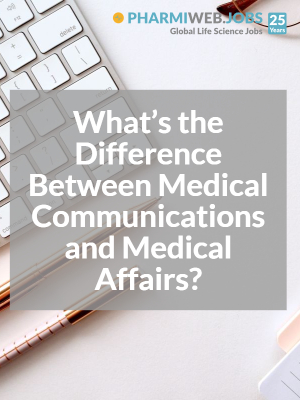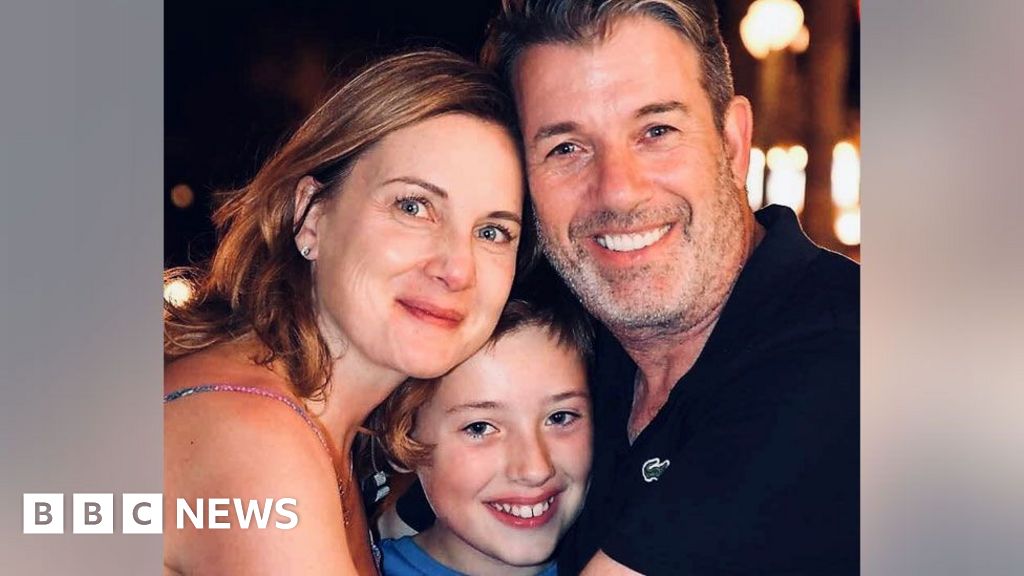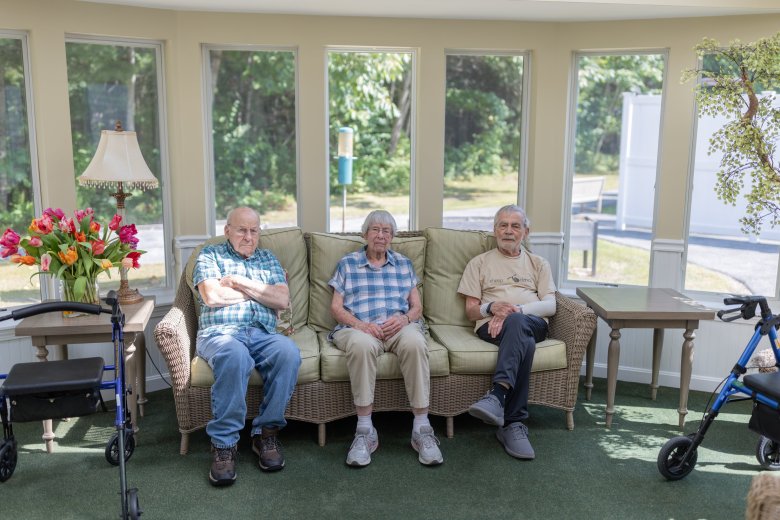Expert recommendations on sharing medical information with patients: a qualitative study | BMC Health Services Research

“You must make your information giving much more frisbee than shot put… So you throw a little bit of information out… and then you get the patient to throw the frisbee back and then you know where to throw it next… it’s moving from this idea of “I’m only being helpful if I’m actually the transmitter.” (Expert 15)
We conceived four main themes regarding sharing information with patients: (1) “Sharing information with patients should be a dialogue, not a lecture” (2) “Help the patient process emotions” (3) “Explore the patient’s knowledge and perspective” (4) “Tailor and structure the information”. The first theme was a “higher order” theme, functioning as a guiding principle encompassing the others, while the others were considered key aspects of sharing information. Each theme included subthemes that related to specific challenges and solutions. Table 2 summarizes the four themes and related subthemes.
The guiding principle: sharing information with patients should be a dialogue, not a lecture
As all experts pointed out: “information giving is an interactional process” (expert 10). The experts reflected on this point as being an underlying, guiding principle:
“One of the biggest principles of information sharing is that it is a dialogue, not a monologue.” (expert 05)
The experts contrasted sharing information in a dialogue with outdated “sender-receiver” models of communication, where information sharing is seen as a linear process where one “downloads information” from the other (expert 02). A striking analogy for these contrasting models is that bad information sharing practice looks like throwing “shot put” at the patient while good information sharing practice looks like throwing a “frisbee” back and forth (expert 15).
Challenge: clinicians are habitualized and expected to be a lecturing expert
Some of the experts explained why it may be hard for clinicians to share information with patients in a dialogic way, and why they can often end up speaking to the patient as if they were delivering a lecture. They discussed that professional identity built during clinical training, and maintained during clinical practice, could hinder clinicians in adopting a dialogic approach with patients. One expert mentioned that clinicians are trained to be knowledgeable and to help by providing answers and solutions to patients.
“It is moving from this idea of I’m only being helpful if I’m actually the [information] transmitter.” (expert 15)
One expert reflected further on how students are taught in a lecturing way during medical school, implying that clinicians may adopt this approach when sharing information with patients later.
“In the first couple of years of medical school, the only way they learn is by getting information.” (expert 02)
One expert mentioned that patients also reinforce this position, as they expect the clinicians to be knowledgeable and trustworthy experts. Breaking these expectations, by for example opening up about uncertainty, can be challenging.
“The medical practitioner represents a stereotype, a cultural, archetypical persona. So there is a large degree of trust in that archetype… So we play on that, so trust can be established very swiftly. Because you are THE doctor. And many times, what is most important is that you behave in accordance with people’s expectations, enough for them to maintain this trust.” (expert 06)
One of the consequences of this “expert identity” is that clinicians may see uncertainty and lack of knowledge as a threat, as something to avoid. Uncertainty and fear may lead to lecturing about the information, without giving space for questions or other input from the patient.
“If the doctor is very uncertain about the information he or she should provide, they tend to talk more.” (expert 12)
“They are scared of getting questions they don’t know the answers to. So they don’t leave gaps for the patient to ask.” (expert 09)
Solution: strive for the goal of shared understanding
According to the experts, clinicians should move from the old-fashioned goal of transmitting information from one person to the other to deliberately set a goal that orients to the other person. Instead of “have I made myself clear” the goal should be “do we understand each other”.
“The information giving is not so interesting. It’s the recipient’s ability to make sense of this information and turn it into something of value that is interesting.” (expert 06)
In this regard, many of the experts used the term “shared understanding”. Shared understanding means that both parties in the conversation co-create meaning in the dialogue. That is, they learn from each other, step by step, and adjust their words and actions incrementally, until they are satisfied that “I know what you mean, and you know what I mean”. By viewing shared understanding as something that is co-constructed, it is easier for the clinician to move from being a lecturer to being in a dialogue with the other person.
“I have absolutely switched (from using the term giving information) to sharing.” (expert 05)
“You work together to find that common ground, that kind of shared understanding.” (expert 07)
By aiming for shared understanding, experts suggested that clinicians can bypass many of the challenges of “giving” information. Having this goal consciously in mind helps the clinician communicate in a way that serves the patient.
“It (sharing information) is not about you (the clinician).” (expert 15)
Solution: use established clinical communication models
All the experts indicated that using established clinical communication models, guides or techniques can help when sharing information as part of a dialogue.
“For you to be a good communicator as a doctor, you have to have a toolbox of communication resources that you can draw on.” (expert 07)
One expert pointed out how too many clinicians were “totally winging it” (expert 04), meaning that clinicians tend to rely on their natural communication skills developed through everyday life, rather than considering clinical communication as a professional skill that ought to be learned.
The experts referred to several useful models and methods. Several experts mentioned that they use generic clinical communication guidebooks such as the Calgary Cambridge Guide and the Four Habits Model that include strategies for information sharing.
“We tend to stick to that model [Calgary Cambridge Guide], but in the postgraduate teaching we’ll talk about other models, for example the Four Habits.” (expert 15)
Other experts mentioned other more specific resources for focused information sharing tasks. One expert, for example, said: “in the context of breaking bad news, I would use the SPIKES model” (expert 11). Another expert endorsed this model for its ability to guide clinicians to be mindful of the patients’ emotions and perspective.
“And what I liked early on about SPIKES is that it includes empathy, the E stands for empathy.” (expert 08)
Many experts referred to Ask-Tell-Ask and Chunk-And-Check, as communication formulas that are easy to remember and apply. With Ask-Tell-Ask, clinicians are guided to involve the patient by “asking” the patient for their pre-existing knowledge, preferences, and understanding as a part of the “telling” process. Such involvement would create a more dialogic, back-and-forth quality of the interaction.
“I very much like this slogan so to speak from American oncology, ask tell ask, indicating that to TELL, giving information, is given in a context of asking, listening. So I think one of the most important principles is that information giving is part of an interactional process that includes, in a way, always asking the patient, or listening to where the patient is, before you give information. And when you give information, kind of test that out while you’re listening to the patient’s response.” (expert 10)
With Chunk-And-Check, clinicians are encouraged to share information in appropriately sized “portions” to avoid overwhelming the patients, and regularly check if the patients have understood.
“Give small blocks of information and then check the understanding along as you give it.” (expert 13)
Finally, two specific techniques were mentioned as useful tools for sharing information. One was the newspaper or book metaphor for structuring information and the other was the teach-back method for checking understanding. These will be further explored in theme 4.
Help the patient process emotions
Many experts emphasized the importance of helping patients work through the emotions that might arise when sharing information. It involves anticipating, recognizing, and making space for emotions in the consultation.
Challenge: emotions affect patients’ capacity to handle information
As an expert emphasized: “it’s always that way: Emotions trump facts” (expert 06), meaning that the patient’s emotional state and/or reaction has a powerful influence on the information sharing process. This mechanism was mentioned by many of the experts, with one using the term “arousal”.
“Arousal stands in the way of cognitive processing.” (expert 03)
Some experts pointed out that medical information is intrinsically charged with emotions, with different degrees of intensity. Furthermore, medical information might come in conflict with patients’ previous expectations, understanding or needs. Therefore, even information that might seem neutral or innocuous to the clinician might cause emotional responses such as fear, anger or confusion for the patient.
“Do not think information is free from affect. When you go over your test results with patients, they’re going to have an affective reaction to what you tell them.” (expert 07)
As a consequence, the emotional response may vary greatly and “the information can be received completely differently by patients depending on the level of emotional charge that goes with it” (expert 04).
Anticipating and making space for emotional responses are especially important when breaking bad news. Sometimes information can be a matter of life and death, for example, when breaking the news that the patient has terminal cancer.
“Everything you say after you have given the serious news, the patient will tend to not remember.” (expert 10)
In such cases, the emotional responses the patients have may greatly hinder the process of sharing information and the patients’ understanding, especially when the clinician does not manage to address the emotions appropriately.
“They didn’t address the emotion in the room, and because they didn’t address the emotion, the information went right past them.” (expert 04)
One expert mentioned that “feeling unsafe” can become an emotional barrier to processing the information.
“If the patient doesn’t feel safe with you, it will be hard for the patient to follow information that is cognitively loaded.” (expert 12)
Solution: pay attention to the emotion
One expert specified that in order to help the patients process their emotions, the clinician must first become aware of them. This includes paying attention to, and actively searching for emotional responses.
“You have to pay attention to the emotion.” (expert 04)
Reflective questions can help remind the clinician to consider the inner emotional world of the patient.
“What does this person feel like at the moment? Does he feel threatened by some ominous disease or looming death? Or does he feel bewildered?” (expert 06)
Several experts pointed out that clinicians might need to adjust their view of emotions and of emotional responses. Emotions are not something to oppose or to battle, not something dangerous, but rather something natural to accept and make space for.
“I try to tell my students that crying is not dangerous.” (expert 08)
“If the patient is upset, that actually means they understood the information.” (expert 04)
Thus, having an accepting and curious attitude towards emotional responses might be a first step in helping the patients process their emotions.
Solution: respond with empathy
Several experts noted that addressing patients’ emotional responses is an important part of sharing information.
“If the emotion is significant, we need to address it.” (expert 04)
Several experts emphasized the importance of empathetic responses. As one expert noted: “Empathy is about stating your witnessed emotions. You have to say something” (expert 05).
Addressing emotions can be done in several ways and benefit from different strategies.
“We experiment with several techniques, nonverbally, putting a hand on the shoulder, pushing a Kleenex box in the direction of the patient, to more verbal responses like: I know this is not the news that you wanted.” (expert 08)
One expert suggested to “respond in a way that acknowledges the patient’s emotions” (expert 10) pointing to validating emotions as an important element in information sharing.
When clinicians not only accept emotions but also validate them, the patient might have the opportunity to process the emotions, thereby being more able to process the information that is being shared.
Explore the patient’s knowledge and perspective
With this theme, the experts stressed how checking and exploring the patient’s perspective throughout the consultation can help the clinician make sure they are sharing the right information at the right time and at the right level, in accordance with the patient’s preference and values. Patients’ perspectives can include their previous knowledge about the topic, information needs, expectations and emotions. Exploring each patient’s individual perspective is a natural step towards sharing information in a dialogic fashion.
“One of the key skills is starting by saying: We think you have diabetes; what do you know or what do you think about it?” (expert 05)
Challenge: clinicians wrongly estimate what patients understand and why they do not engage
According to the experts, a common mistake of clinicians is failing to grasp how much the patient understands about their health, their condition and their treatment. As a result, it is difficult to find common ground for building incremental knowledge during the information sharing process.
“I did some work with a sociolinguist a few years ago where we took little pieces of the encounter and noticed how the clinician and the patients were like ships passing in the night; they just didn’t really understand each other.” (expert 01)
“It’s so incredibly important to match the patient in terms of their health literacy.” (expert 15)
Wrongly estimating the patients’ level of understanding may be due to clinicians being unaware that they are more experienced and knowledgeable about medical information than their patients are. One expert pointed out how clinicians might be interacting predominantly with other medical professionals and highly educated people in their daily lives, thus skewing their expectations of their patients’ health literacy.
“Even in the first year, they (medical students) are in the top 10% of the country in terms of knowledge. And I think getting them to understand that the rest of the country are not like that, you know, people don’t understand medical terms.” (expert 09)
Furthermore, some patients tend to be reserved and quiet during consultations, which can be indicated by, for example, not interrupting or speaking up when they do not understand something. One expert argued that this apparent reticence is partially because of the power differential, of which clinicians might be less aware.
“Keep in mind that often patients will say yep, I understand, but there are lots of barriers to them actually admitting that they don’t.” (expert 11)
“They (doctors) don’t understand how difficult it is to interrupt a doctor because of the power differential.” (expert 12)
Solution: map patients’ preferences and knowledge
The experts claimed that in order for clinicians to share information effectively, they need to “assess the starting point” (expert 05), which includes to “check what the patient knows from before” (expert 10) and ask “what have other physicians said?” (expert 10). Mapping the patient’s preferences and knowledge can save time and effort and help the clinician tailor the information to that particular patient (see theme 4 for more details about tailoring).
“Because so much of effective information sharing is finding out where the patient is at, what they know, and what they’re worried about.” (expert 05)
“Your choice of the way you inform will depend on the level of understanding and information the patient has beforehand.” (expert 10)
Several experts emphasized the importance of finding out what and how much the patient actually wants to know. Regularly assessing the patient’s preferences and previous knowledge requires, according to the experts, that clinicians ask questions throughout the consultation, also as a part of the process of sharing information.
“You should be asking questions as part of the giving information process. So you’re making sure: what does the patient know already? What does the patient want to know? Is the patient following what you’re saying?” (expert 08)
Patients’ preferences for information vary. As one expert put it:
“Some patients don’t want to know at all… and unless you find that out, your explanation is going to fail.” (expert 09)
The only way to find out for sure is to engage the patient. The experts proposed several ways of encouraging engagement while sharing information: using pauses and silence, providing a question prompt list, and using meta-communication.
“Without saying it, I’m using a pause to give the patients the possibility of asking.” (expert 12)
“One of the easy but often researched and proven effective interventions on the part of patients is the use of question prompt lists. Basically it’s a list of questions patients can look at in preparation of a consultation.” (expert 03)
“I’ll explain a little bit, but you know, stop me if I’m telling you something that you know, feel free stopping me with questions.” (expert 11)
Paradoxically, asking the patient “Do you have any questions?” could be a suboptimal way to encourage questions, because the patients will often reflexively answer “no”. As one expert put it:
“Asking “any questions?” with an upward tone on your voice means I’m done, and I hope you don’t have any questions.” (expert 01)
Solution: use “teach-back” to ensure shared understanding
Several of the experts recommended applying the principles of teach-back to ensure shared understanding. Teach-back is a method where the clinicians would ask the patient to say back the information they have talked about in the consultation. If a patient understands, they are able to “teach-back” the information accurately.
“Several years ago, I had a patient with diabetes, his HbA1C was high. He was on Glipizide at the time, so I said, “I’d like you to add Metformin twice a day.” And then three months later he comes back and his HbA1C is still 8,5 and I say “Ok, any problems taking the Metformin?” And he goes “No, I’ve been taking that new medicine, it’s not bad.” “Ok so you’re taking Glipizide and Metformin?” And he goes “Oh, I thought you wanted me to stop the other medicine.” So, all of a sudden, we have lost three months of potential diabetes control… and I think that’s where teach-back could have really been helpful.” (expert 02)
However, the experts also mentioned that teach-back is not commonly used.
“Even though it (teach-back) is a good idea, I’d say maybe 20% of all the doctors in the world use it.” (expert 05)
Indeed, as many experts said, teach-back might feel awkward if not presented to the patient in a thoughtful way.
“I think there’s another barrier to teach-back, and that is we sound condescending. Tell me what I just told you.” (expert 02)
The experts suggest phrasing the request for teach-back in different ways to avoid feeling awkward.
“In the end, you must have sufficient time to ask… without giving the patient a feeling of being examined: I know I’ve given you a lot of information now, and it’s important to me to know what you take back from this.” (expert 12)
“The other approach to this is: I wonder what you will tell your loved one when you go home.” (expert 02)
One expert pointed out that by experimenting with teach-back, clinicians might experience its importance, thus making the practice of using teach-back self-reinforcing.
“Actually, the doctors I’ve seen who use it the most are the ones who try using it… they’ll say: So, what’s your main understanding of what you’re going to do when you go home, and the patient is like: Wrong. And they realize they’ve just spent 10 minutes explaining something, and the patient didn’t follow it at all. And that’s when they start using it regularly.” (expert 05)
Tailor and structure the information
Many of the experts alluded to a style of information sharing where the clinician takes the role of a teacher or a facilitator, rather than just an expert who is sharing their knowledge with the patient. They advocated an approach to sharing information that requires structure and tailoring.
“The understanding is through the interaction, not just through the telling.” (expert 07)
Challenge: clinicians tend to overwhelm patients with too much, too detailed, and too complicated information
Several experts highlighted that clinicians tend to overwhelm patients with information.
“So, what I find is that when I work with doctors there seems to be something about informing too much, giving too much information still. And repeating their information too many times instead of checking in with the patient what their perspective on what they have just heard is.” (expert 14)
“Clinicians often speak for a very long time with no interruptions, and they become very unaware that they are talking “medicalese”, using medical jargon terms.” (expert 01)
One expert remembered observing a medical student who “in one sentence without pausing for breath, she gave 9 pieces of information to the patient” (expert 09). Another expert provided a concrete indication of what may be “too much” information.
“If you’re speaking for more than three sentences at a time, it’s probably too much information.” (expert 02)
One expert noted that this may be due to not being able to see things from the perspective of the patient.
“One of the reasons that they overload is that they still find it hard to put themselves in the position of the patient.” (expert 03)
Solution: provide structure
For several experts, one key solution for avoiding overwhelming the patient with too much information was working on the structure of the information sharing, in order to make it easier for the patient to follow and remember. They gave several tips for how to structure information. For example, some suggested signposting, meaning to signal to the patient what kind of information is coming up.
“There’s a small one which sometimes is very helpful: signposting or saying. “Well, I’m going to talk to you about this, this and this.” So, they can follow what you’re saying… You can even use your fingers.” (expert 05)
One expert suggested using a headline, like in books or newspapers, to set the stage for the information sharing session.
“You can tell the rest of the story, but you need to start with a headline, so the patient knows what you’re talking about instead of telling them the story of how you got to the diagnosis. And that’s the big error that I see untrained physicians make over and over again… You can go into the other stuff, but the first part is: Your culture showed you have strep throat, period. One sentence, no clauses, stopped at the end.” (expert 04)
This kind of structuring can be challenging, especially if the clinician is unprepared for the conversation. A good start might be to ask oneself reflective questions that orient to what the patient really needs to know and what the clinician is trying to achieve.
“You should ask yourself the question: what exactly does this patient need to know NOW. That should guide you in prioritizing which information to bring forward.” (expert 12)
“Most of the time, I think students need to think: What am I doing here? Am I instructing, explaining or comparing? And how much depth do I need to go into?” (expert 01)
A final point on structure was managing the tempo and using “the fantastic efficiency of small pauses.” (expert 12).
“The other thing that’s incredibly important is to pause, because I think pauses are actually an opportunity for clarification.” (expert 01)
Solution: tailor
Many of the experts noted the importance of tailoring the information to each individual patient.
“It’s no point having a script: Like, this is the information I want to give everyone coming for bowel screening.” (expert 15)
One expert used the term “bespoke”, meaning made for a particular person.
“I think it’s really important to start with their [the patient’s] agenda rather than say the same things to everybody. It makes it [the medical information] bespoke. And so, I say to the students: you need to make your information giving bespoke rather than standard. What is it that this individual needs?” (expert 15)
Letting the patient drive the information flow can require some patience and self-discipline, as it can be tempting for clinicians to just explain everything they know.
“I encourage the students to be patient. The patient will get there. Answer the questions you’re asked. Keep it short and simple, and let the patient control the amount and the pace of the information giving.” (expert 08)
Tailoring requires engagement, which ties back to the previous theme of exploring the patient’s perspective and knowledge. One expert noted how the level of shared understanding is a product of how much the patient talks during the consultation. With a better understanding of the patient’s perspective and knowledge, tailoring follows naturally.
“[Shared understanding] is greater when you get the patient to talk more about what they think, what they want, what they believe.” (expert 07)
link







